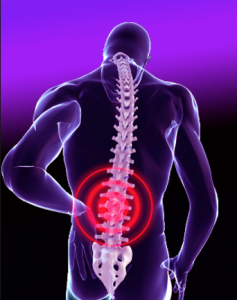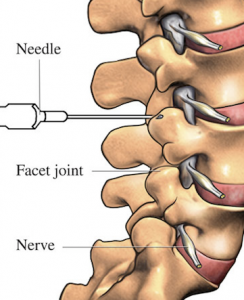Postlaminectomy Syndrome
Post-Laminectomy Syndrome Treatment in Arizona

Post-laminectomy syndrome is a condition that occurs when spine surgery doesn’t achieve the results desired by you and your doctor. Twenty percent of Americans who go through spine surgery end up with post-laminectomy syndrome. They will experience some degree of leg and back pain afterwards.
Post-laminectomy syndrome is often called “failed back surgery.” The spine surgeons perform the back surgery in order to reduce, and hopefully eliminate, chronic leg and back pain due to spinal nerve compression. If the surgery fails to achieve what the patient and doctor expected, post-laminectomy syndrome is the result. Many times, post-surgical pain can be managed properly. Many continue to suffer from leg and back pain after surgery, but pain management experts will help determine the source of pain and provide the best possible results in helping patients.
Causes
In many cases, the spinal nerve root, which has been decompressed by the surgery, unfortunately doesn’t fully recover from its prior trauma and continues to be a source of chronic nerve pain or sciatica. Here’s some other causes:
- SI joint dysfunction
- Myofascial pain
- New disc herniation/recurrent
- Post-operative spinal instability
- Pelvic Ligament instability
- Structural changes in the spine above or below site of spinal fusion.
- Scar formation which surround nerve roots and cause chronic pain.
Incidence/Prevalence
Around 450 cases of herniated disc, per 100,000 persons in the population, require surgery. Post-laminectomy syndrome occurs following around 15% of surgeries.
Symptoms
Pain you experienced prior to surgery can occur afterwards (each case varies in symptoms). Some of the symptoms of failed back surgery syndrome are but not excluded too:
- Dull and achy pain. Located primarily in the spinal column.
- Sharp, stabbing and prickly pain. This pain is commonly referred to as neuropathic pain.
- Leg pain. At times, stabbing and deep aggravating pain.
Diagnosis
As with most health problems, you want an experienced Arizona pain doctor and in this case, there is no exception. After surgery, you expect to find some relief and when that doesn’t happen, or after a while it doesn’t happen, you will for sure want an experienced Mesa pain management doctor. The type of pain that you may have with post-laminectomy syndrome can mimic the symptoms of several other disorders. The pain management doctor will need to accurately determine the correct source of the pain, which is much needed when being successfully treated. To make the diagnosis, the AZ pain doctor will do the following:
some relief and when that doesn’t happen, or after a while it doesn’t happen, you will for sure want an experienced Mesa pain management doctor. The type of pain that you may have with post-laminectomy syndrome can mimic the symptoms of several other disorders. The pain management doctor will need to accurately determine the correct source of the pain, which is much needed when being successfully treated. To make the diagnosis, the AZ pain doctor will do the following:
- A thorough clinical evaluation
- A complete medical history, analyze your symptoms and follow up with a physical examination.
- Tests including MRIs, CT scans, X-rays, and electro-myelogram (EMG)
Treatments
- Facet joint injections – These are used as a diagnostic and therapeutic tool to confirm that facet syndrome is the source of pain. The doctor will inject the tiny facet joint(s) with a long-acting anesthetic and/or a corticosteroid.
- Spinal cord stimulation (SCS) – This is an innovative technology that addresses some of the most difficult pain problems.
- Radiofrequency neurotomy – This test interrupts the sensory nerve supply to the involved facet joint through the use of thermal denervation.
- Epidural steroid injection (ESI) – Also called an epidural nerve block, ESI is the injection of corticosteroid medication into the epidural space of the spinal column.

Resources
Epstein, N. E., and . “Lumbar Laminectomy for the Resection of Synovial Cysts and Coexisting Lumbar Spinal Stenosis or Degenerative Spondylolisthesis: An Outcome Study.” Spine 29 9 (2004): 1049-1055.
Sleigh, Bryan, and Ibrahim Nihum. “Lumbar Laminectomy.” eMedicine Health. Eds. Joseph A. Salomone, Francisco Talavera, and Richard Harrigan. 5 Oct. 2005. WebMD, LLC. 13 Mar. 2009 Retrieved from: http://www.emedicinehealth.com/articles/6606-1.asp
Soin, A. “Functional Outcomes in Patients with Chronic Nonmalignant Pain on Long-term Opiod Therapy.” Pain Practice 8 5 (2008): 379-384.
Wheeler, Anthony H., James R. Stubbart, and Brandi Hicks. “Pathophysiology of Chronic Back Pain.” eMedicine. Eds. Michael J. Schneck, et al. 9 Jul. 2007. Medscape. 13 Mar. 2009 http://emedicine.medscape.com/article/1144130-overview



